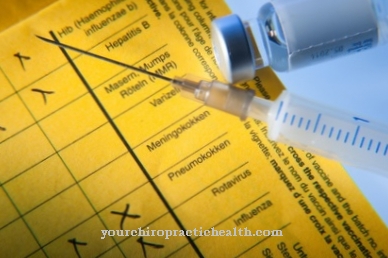As coordination the interaction of different control, perception and motor skills is understood. It is important for an orderly human movement.
What is the coordination?

The movement and training sciences classify movement coordination as a process and result of the interaction of motor, control and perception elements that serve the targeted and orderly movement of people. Coordination is the interaction between different sub-areas.
In sport, movement coordination is the interaction between the nervous system and muscles. Together with emotional and cognitive processes, movement coordination is one of the most important factors for human mobility.
Function & task
Human movement coordination is explained by cybernetic control loop levels. The human being is a system by which external stimuli from the environment are perceived and processed.
This is how the respective movement is implemented. In this way, humans are able to direct their movements in the desired direction through the innervation of their muscles and feedback.
The first control loop level is referred to as the rough coordination phase. The movement coordination takes place as a conscious control. Subordinate sections such as the basal ganglia or the cerebellum are not involved.
Since the execution of the movements in the first control loop level takes place with a gross motor, hardly any corrections can be made. Only acoustic and visual stimuli give people feedback, which applies primarily to athletes. For example, a tennis player knows how to serve, but does not notice any bad posture because he does not receive any internal feedback.
The second control loop level involves control via subcortical centers. By performing certain movements more frequently, they become more and more secure. Movement programs are formed in the cerebellum.
Because feedback is provided via the kinaesthetic analyzer, the movements can be controlled. The supraspinal and subcortical centers are responsible for this unconscious form of control. In addition, when performing this movement, human consciousness can focus on other points that are important for attention.
The third control loop level is the control via spinal and supraspinal centers. It is also considered a fine-tuning phase. The spinal and subraspinal centers located in the brain stem and motor cortex allow movement to be carried out safely even when disturbances occur. In sport, however, a person only reaches this phase after years of training.
Higher centers within the human brain deliver impulses to the lower-lying regions of the central nervous system (CNS). At this point, the movement is saved as an efferent copy. The impulse then goes on to the success organ so that the movement can be carried out.
After the end of the movement, feedback is given to the deeper CNS centers. This results in a comparison of the movement with the efferent copy. In this way, the person receives a target-actual value comparison while moving.
It depends on the respective area of life which tasks the movement coordination has to fulfill. A distinction is made between everyday, athletic and professional motor skills. The more complex the requirements, the more complicated the interaction of the individual elements becomes.
Everyday movements such as running, climbing stairs or packing objects are relatively simple forms of movement that can be mastered quickly. In contrast, job-specific movements must first be learned.
The demands on movement coordination are particularly high in sports. It is often necessary there to combine athletic movements with dynamic demands.
You can find your medication here
➔ Medicines against concentration disordersIllnesses & ailments
The movement coordination of humans can be affected by disturbances. Doctors refer to these as ataxias. Certain parts of the nervous system suffer from functional impairments. The cerebellum is particularly affected. Damage to the peripheral nerves or the spinal cord can also be responsible for ataxia.
There are different forms of ataxia, the name of which depends on the part of the body where they occur. These include standing ataxia, trunk ataxia, pointing ataxia and gait ataxia.
In a standing ataxia, the affected person cannot stand or walk without assistance. In the case of a trunk ataxia, sitting or standing straight without a support is no longer possible. A gait ataxia is noticeable through an unsteady and wide-legged gait. A pointing ataxia is used when the patient can no longer coordinate their movements. As a result, fine motor problems arise in that those affected point to the wrong side or make shaky movements. If ataxia only occurs on one side of the body, this is called hemiataxia.
As a result of ataxia, other symptoms often occur. These include speech disorders, difficulty swallowing, and uncoordinated eye movements. Patients often suffer from side effects such as pain, muscle cramps and incontinence.
Ataxia is triggered by diseases in which there is a loss of function of certain parts of the central nervous system. First and foremost, it is damage to the cerebellum. This is responsible for the coordination of information that comes from the balance organ, the sensory organs or the spinal cord. In the cerebellum, this information is translated into motor movements.
Common causes of illness are tumors in the cerebellar region, circulatory disorders, cerebral haemorrhage or a stroke. However, inflammation of the nervous system, as in multiple sclerosis, which damages the cerebellum or the spinal cord, sometimes triggers ataxia.
Other possible causes are infectious diseases such as measles or excessive use of certain drugs such as benzodiazepines or anti-epileptic drugs. Sometimes ataxias also have a genetic trigger.

.jpg)






















.jpg)



